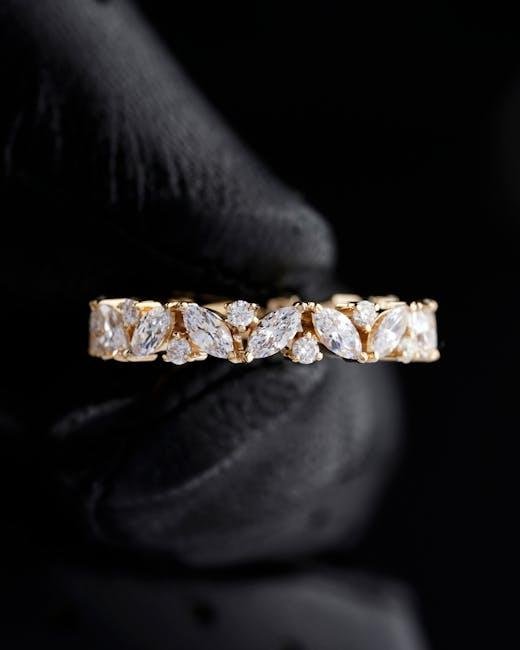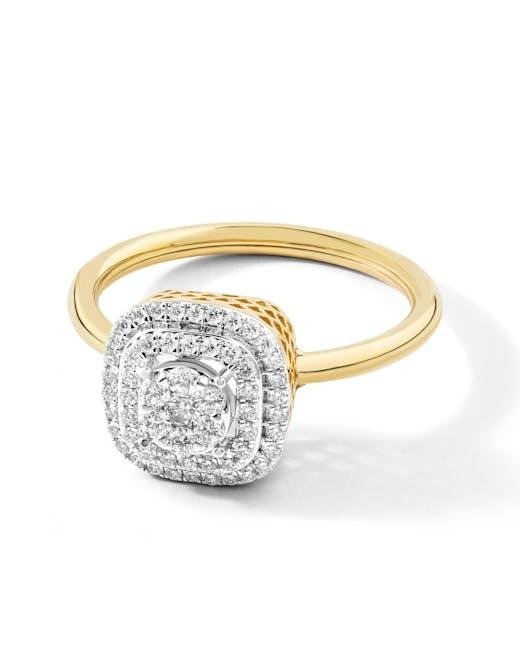In a world where financial opportunities sparkle like the gems themselves, diamonds command a unique place among potential investments. Once considered purely luxurious adornments, these brilliant stones are now drawing the attention of savvy investors looking to diversify thier portfolios. Yet, as with any investment, the allure of diamonds brings with it a host of questions: Is this age-old symbol of wealth a smart choice for modern portfolios, or does it carry hidden risks? In this exploration, we’ll delve into the multifaceted realm of diamond investing, examining market trends, potential pitfalls, and the timeless appeal that has captivated investors for centuries. Join us as we unravel the complexities of diamonds as an investment—an endeavor that shines both bright and dim, depending on the angle from which it is viewed.
Understanding the Intricacies of the Diamond Market
The diamond market is a complex web of factors influencing both value and desirability. Unlike customary investments such as stocks or real estate, diamonds are heavily impacted by their perceived worth rather then intrinsic value alone. Factors that come into play include the 4 Cs: cut, color, clarity, and carat weight. Additionally, geopolitical issues, fluctuations in consumer demand, and the rise of lab-grown alternatives have shifted the landscape substantially.Investors must consider these nuances to determine weather diamonds represent a stable asset class or a high-stakes gamble.
Moreover, the diamond market exhibits a unique liquidity challenge. In contrast to more liquid assets, diamonds can take longer to sell and may not always fetch a price reflective of their appraised value. Factors such as market trends and the emotional appeal of the stone also play critical roles. Investors should familiarize themselves with the key elements of the market, including:
- Market Trends: Understanding demand dynamics.
- Certification: Importance of reputable grading.
- Resale Value: How rarity and desirability impact future sales.

Evaluating the Long-term Value of Diamond Investments
When considering diamonds as an investment, it’s essential to analyze their long-term value. Unlike stocks or bonds, the diamond market is notoriously opaque, influenced by factors such as supply, demand, and consumer perception. Many investors are drawn to diamonds for their tangible beauty and potential for appreciation. However, the actual value can fluctuate widely based on market trends and the specific characteristics of the stone. Factors to consider include:
- Quality of the diamond: Cut,clarity,color,and carat weight significantly influence value.
- Market Demand: Changes in consumer preferences can lead to price variations.
- Investment Grade vs. Fancy Color Diamonds: While some diamonds may appreciate in value,not all will perform equally.
Additionally, the resale market for diamonds can be less liquid than other investment mediums. Many investors may find themselves holding onto their stones for years before finding a willing buyer, leading to uncertainty. Here’s a brief comparison of key points to understand the long-term value:
| aspect | Diamond investment | Traditional Investments |
|---|---|---|
| Liquidity | Low | High |
| Market Volatility | Moderate | Varies |
| Tangible Asset | Yes | No |
| Emotional Value | High | Variable |
Ultimately, the decision to invest in diamonds should be based on a thorough understanding of both the emotional and financial implications. While they can serve as a unique store of value, navigating the nuances of the diamond market requires diligent research and a well-informed outlook.

Risks and Rewards: What investors Need to Consider
Investing in diamonds offers a mélange of opportunities and challenges. On one hand, the allure of these precious stones can lead to substantial profits for savvy investors. The factors influencing their value include quality, rarity, and market demand. when navigating the diamond market, potential investors should consider the following benefits:
- Intrinsic Value: Diamonds often hold their value over time, making them a solid hedge against inflation.
- Portability: unlike real estate or stocks, diamonds are easily transportable, allowing for discreet investment.
- Diverse Market: The diamond market is global, providing opportunities for investment across different regions and economic conditions.
Conversely, the diamond investment landscape is fraught with potential pitfalls that could dampen expected returns. Given the lack of transparency and standardized pricing, investors may face challenges in determining fair market value. Key risks include:
- Liquidity issues: Unlike stocks or bonds, diamonds can be tough to sell quickly at market value.
- Market Volatility: Prices can fluctuate due to changing consumer preferences, economic downturns, or oversaturation in the market.
- Authentication Concerns: Ensuring the authenticity and quality of diamonds requires expertise, as counterfeit stones can easily enter the market.

Strategic Tips for Navigating the Gemstone Investment Landscape
Investing in gemstones, especially diamonds, requires a nuanced understanding of both the market dynamics and personal objectives. Before diving in, consider the following strategic tips:
- Research the Market: Knowledge is power. Familiarize yourself with the diamond grading system, cutting styles, and color variations. Understanding these factors will aid in identifying quality stones and make informed purchasing decisions.
- Certification Matters: Always verify that your diamond comes with a reputable grading report from recognized laboratories like GIA or AGS. This certification provides assurance regarding the diamond’s quality and can enhance its liquidity in the future.
- Diversify Your Portfolio: While diamonds can be a valuable asset, consider diversifying your investments across various types of gemstones to mitigate risks.Gems such as sapphires and emeralds can balance your portfolio alongside diamonds.
Another critical aspect is to stay updated with market trends and consumer behavior, as the demand for diamonds can fluctuate based on socio-economic factors. Specifically, keep an eye on:
| Trend | Impact on Investment |
|---|---|
| Lab-Grown Diamonds | Greater availability may affect the value of natural diamonds. |
| Shifting Consumer Preferences | Growing interest in ethical sourcing can increase demand for responsibly mined stones. |
| Investment Funds | More funds targeting gemstone investments could stabilize the market. |
Concluding remarks
In the shimmering world of investments, diamonds stand out like the rare gems they are—captivating, alluring, and often misunderstood. As we’ve explored the glimmering complexities of this asset class, it becomes clear that whether diamonds shine as a smart investment or flash dangerously close to risk largely depends on the perspective of the investor.
While these precious stones can undoubtedly offer beauty and cultural importance, their potential for financial return is a nuanced conversation, adorned with both enticing possibilities and inherent uncertainties. Investing in diamonds requires more than just an eye for sparkle; it calls for diligence,market knowledge,and sometimes,a touch of intuition.
As you weigh your options, consider what you truly value in an investment. Is it the allure of a tangible asset with lasting beauty? Or the promise of liquidity and market resilience? The choice is yours, but whichever path you choose, remember that informed decisions—informed by knowledge, research, and a clear understanding of your financial goals—will always shine the brightest.
May your investment journey be as radiant as the gems you contemplate, and may clarity guide you in a market filled with both brilliance and obscurity.

